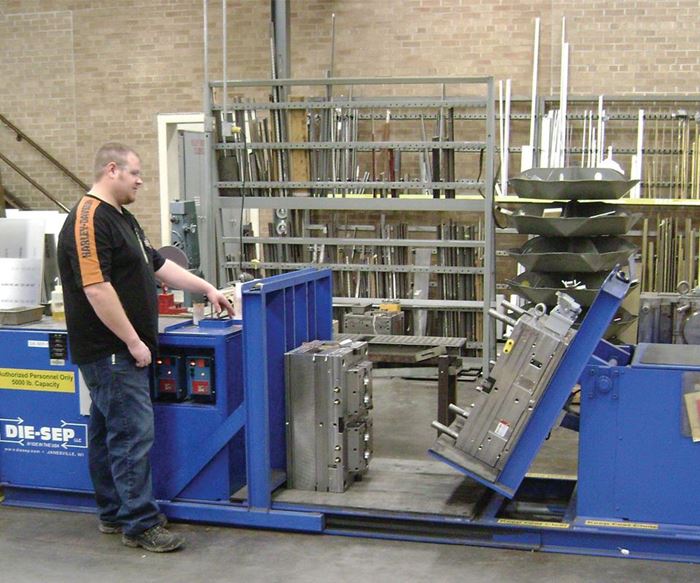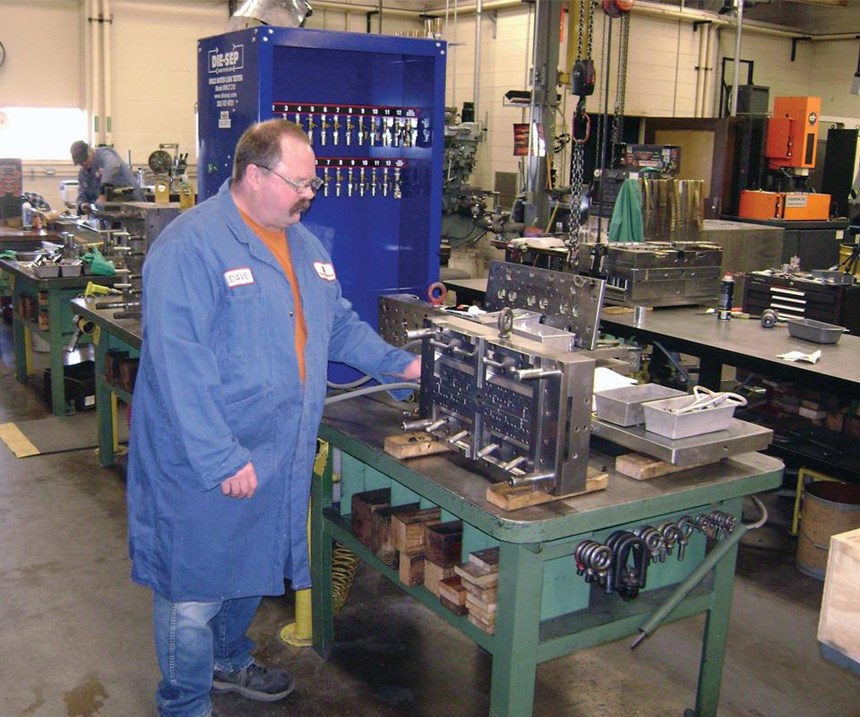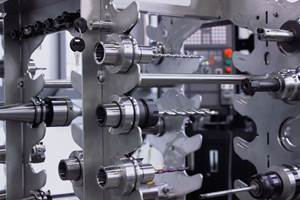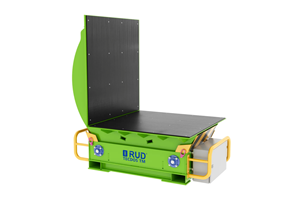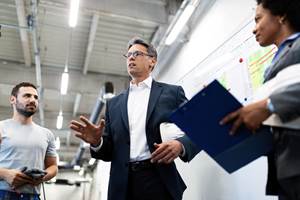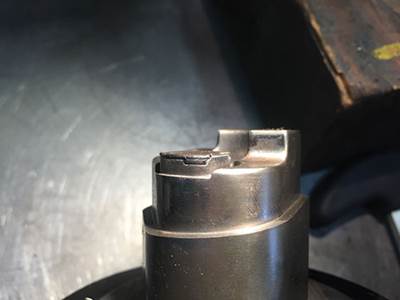Toolroom Systems Boost Safety, Productivity
A mold separator and a water leak tester were the right solutions for this Minnesota shop offering both mold and molding operations.
Opening molds for repairs, preventive maintenance or other work is straightforward and safe, right? Maybe. Those who must do it every day might argue the point, especially when dealing with larger molds. In addition, discovering water leaks in molds after they have just been repaired adds to the frustration—and downtime. While the first issue can cause injury and strained muscles, both issues negatively affect productivity. This is a tale of two systems that eradicated these problems and boosted safety, productivity and more at 3M’s New Ulm, Minnesota, manufacturing plant: the Die-Sep Mold Separator and the Die-Sep Mold Water Leak Tester.
Mold Separation Anxiety
Safety is the number one priority at 3M, according to David Youngblom, plant engineering supervisor, but sometimes it takes a fresh pair of eyes to bring a potential issue forward. So when he noticed three members of his mold shop’s team struggling to pry open a 3,800-pound injection mold for wire connectors, with one of the guys standing on the tool, he says he knew he had to find a solution that would prevent an accident and injuries from occurring.
3M’s New Ulm plant comprises two buildings: One houses the mold shop, which employs 11 moldmakers, and it is also where most of the plant’s rubber injection molding and extrusion operations take place. The second building is where all the plant’s injection molding and product assembly operations happen. Youngblom says the New Ulm plant supports 465 molds ranging in size between 65 and 6,300 pounds. At this plant alone there are roughly 37,000 SKU numbers, meaning there are that many products or components for products being molded there.
“We avoided a safety incident just by luck that day,” Youngblom says. “It was quite clear that someone was going to get hurt at some point, because it required three guys just to try and flip that tool over.” To avoid future safety hazards, 3M purchased its first mold separator machine from Lake Geneva, Wisconsin-based Die-Sep. Youngblom says a second, larger Die-Sep mold separator was purchased just 18 months later for use in the second building.
It wasn’t difficult to justify the investment. Youngblom says he convinced the front office by taking a video of the guys disassembling a mold, which entailed laying the mold down flat and then lifting one side of it up while the other side remained on the bench. “But that was problematic,” he says. “The tool would want to tip or cock, and then bind, and as soon as that happens, something has to give.” That “something” was typically leader pins and bushings, pins for cams and other alignment components. While it’s not detrimental to the tool because alignment is what those components are for, Youngblom says that when you work with a high number of molds those commodity items add up fast. “We weren’t monitoring the use of these items, but if I were to guess, I’d say there was probably a few thousand dollars’ worth of alignment products that wore out prematurely each year due to the previous mold separating process.”
Operating the mold separator is easy, according to Youngblom, and he says the Die-Sep mimics a molding press without the tonnage. It opens the molds using a small cylinder and 110-volt electrical magnets that hold the tool securely against its platens. These magnets are custom fitted for the size tools being opened. For example, only two magnets per side may be needed for small tools, but very large tools may require a dozen per side.
The Die-Sep can be built with core pulls, which helps with tool disassembly, he adds. It’s a hydraulic system for cores or cams that are actuated by cylinders. It also will tip one half of the mold for working on it horizontally at tabletop height. Bigger machines require a platform around the work area. Basically, there are two hydraulic control levers used to open and close a mold, and two switches that turn the heavy-duty magnets on and off.
An added benefit that Youngblom says his team never anticipated is that the Die-Sep doesn’t have enough power to damage a tool when opening or closing it. “If there are mold components such as leader pins, cam pins, locks or telescoping shutoffs that are bent, broken or misaligned, this machine won’t damage that tool.” According to Louis Bowler, executive vice president of sales at Die-Sep, the hydraulic system pressure is set at the factory at a pressure low enough to stop the platen long before that happens. In addition, the magnets will release from a mold if there is excessive force required when attempting to open a mold. “Excessive force when opening a mold usually indicates there is some internal mold component in the wrong position or jammed,” he says. “The Die-Sep’s hydraulic gauge is conveniently located beneath the hydraulic controls and indicates the system’s pressure while using the unit. For example, the maximum pressure 3M has for 5,000-pound molds is 500 psi with a two-inch cylinder, but this can change depending on the size of each machine and its intended use.
“Each of our Die-Sep machines is custom built based on the size range of molds we work with,” he continues. “It’s relatively light at under 800 pounds, so we can move it around with a fork truck. It runs on 110 volts, so we can plug it into any outlet and use it anywhere in the shop. It now takes just one person, instead of three, to safely open and close each mold, saving about 20 minutes per mold in the process. It also reduces the risk of damaging the tooling and has increased our productivity by simplifying the process. I can’t say enough good things about it.”
Sneaky Leaks
Productivity again became an issue at 3M New Ulm due to undetected water leaks in molds that had just returned from the company’s toolroom after having repair and maintenance work performed, Youngblom says, but that side of the tool was never touched. “It was keeping the molds out of production longer and it made our team look bad.”
Youngblom learned about Die-Sep’s portable Mold Water Leak Tester and invested in the system with hopes it would eliminate the issue. It did that, and more, he says. For one, the water leak tester allows his team to test the whole mold for leaks, not just the side being worked on. “We used to use air to test for water leaks, like many shops do, by plugging one side of the water line and using an air fitting with a pressure gauge attached, he says. What we found is the air typically won’t flush that crud or loose debris that inevitably develops around O-rings and baffles and causes that leak. This is because it’s not a hydraulic flush; it’s a compressed air test and it doesn’t flow. With the leak tester, water flows through the tool and it takes the debris with it.”
The leak tester is portable and features a 25-gallon, self-contained tank. It has 12 circuits, which covers a wide variety of tools, and a manifold that can be connected to a mold via water hoses, but Youngblom says users can add T-fittings to the lines to double the number of hookups. Larger molds typically have a manifold system that can be used to hook up as many lines as may be needed. There is also a water pump and a digital flow meter to show the volume of water being circulated. Once the hoses are hooked up to a mold, water can then be circulated throughout the tool under pressure to find leaks and to flush the water channels. A micron filter on the back of the machine traps any debris that may be in those channels, he says.
Besides being very affordable, Youngblom says the water leak tester is a valuable tool that enables 3M to perform water jacket cleaning, leak testing and flow metering. “These three tests keep our tools in good working order, they keep the process cycle times on track, and they prevent premature tool wear. The biggest benefit is we no longer have tools coming back with water leaks,” he says.
Watch a video on simplifying mold opening and closing at short.moldmakingtechnology.com/die-sep.
Related Content
Tool Caddy Safely Stores Cutting Tools
The Kaiser Manufacturing Tool Caddy makes it convenient for the operator to grab toolholders without any risk of cuts.
Read MoreIndustrial Drive Technologies Support Moving, Rotating Molds of All Sizes
RUD Tecdos solutions within its Mold Handling Solutions portfolio manage horizontal, vertical and rotational drive solutions for all environments.
Read MoreCertified Quality Management for Plastics Professionals – Materials to Tooling to Recycling
Why is certification of a shop’s quality management system to ISO 9001, AS9100, IATF 16949 or ISO 13485 so special? What does the certification signify? And what supports the paper behind the framed certificate?
Read MoreWhy Shoulder Bolts Are Too Important to Ignore (Part 1)
These humble but essential fasteners used in injection molds are known by various names and used for a number of purposes.
Read MoreRead Next
Laser-Focused on Lean
This toolroom made significant strides in reducing waste and improving workflow with the addition of just one piece of equipment: a mobile, flexible laser welding system.
Read MoreQuickly Getting to the Root of the Problem
Diagnostic device helps molders simply check hot runner cables to ensure connectivity.
Read MoreReasons to Use Fiber Lasers for Mold Cleaning
Fiber lasers offer a simplicity, speed, control and portability, minimizing mold cleaning risks.
Read More
